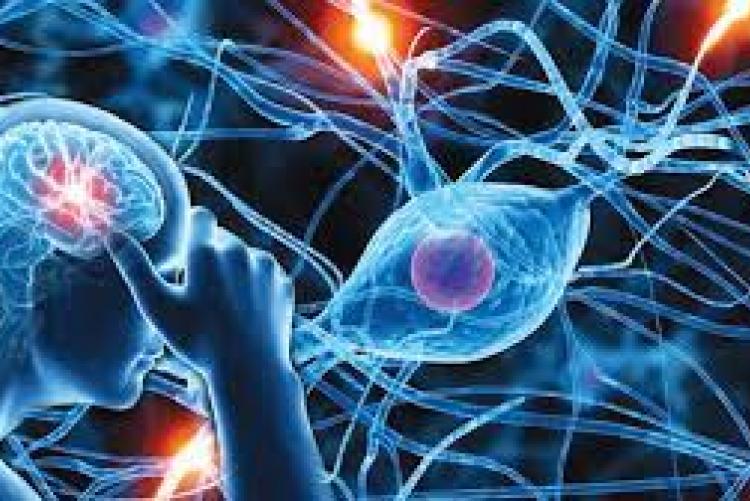Neurophysiology is the branch of physiology dealing with the functions of the nervous
system. ie The study of the functional properties of neurone s, glia , and networks.
Historically it has been dominated by electrophysiology—the electrical recording of
neuronal events ranging from the molar (the electroencephalogram, EEG) to the cellular
(intracellular recording of the properties of single neurons).
As the neuron is an electrochemical machine, it is impossible to separate electrical
events from the biochemical and molecular processes that bring them about.
Neurophysiologists today use techniques from chemistry (calcium imaging), physics
(functional magnetic resonance imaging, fMRI), and molecular biology (site directed
mutations) to study brain function. [1]
Below you will learn all about
Ion Channels
Resting Membrane and Action Potential
Neuromuscular Junction / Synapses
Nerve Conduction
Neurotransmitters, Receptors and Pathways
Ion Channels
An ion channel is a protein macromolecule that crosses the breadth of a membrane and
allows molecules to pass through. The ions move in a direction determined by the
electrochemical gradient across the membrane.
Ions tend to flow from an area of high concentration to an area of low concentration.
In the presence of a voltage gradient, there may be no flow of ions despite unequal
concentrations.
Ion channels can be open or closed.
Opening is brought about by changing the voltage across the membrane, or binding a
chemical substance to a receptor.
Most important role is that they provide the neuron with electrical excitability.
Found in all parts of the neuron and to a lesser extent in the neuroglial cells.
Types of Channel
1. Voltage Gated
2. Chemically Activated
3. Mechanical Stretch/Pressure.
Fundamental Properties of an Ion Channel
1. It is made up of a number of protein sub units, sitting across the membrane,
allowing ions to cross from one side to the other. (Transmembrane pore)
2. The channel must be able to move from open to closed state, and back.
3. Must be able to open in response to the appropriate stimuli.
Some channels respond to chemical stimulus (particularly at the synapse). These channels
have specific receptors for that chemical that leads to channel opening.

